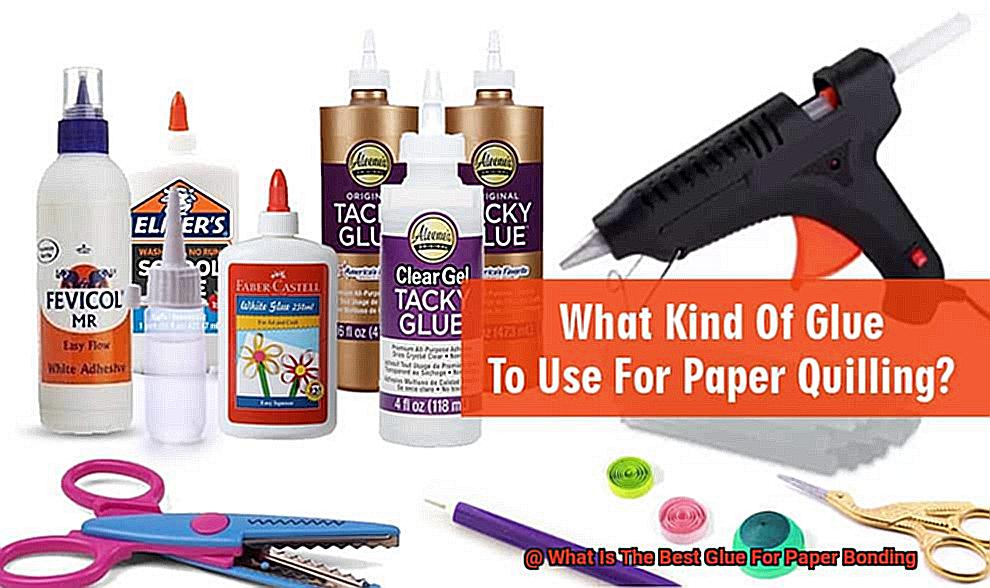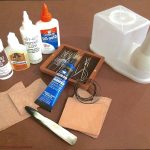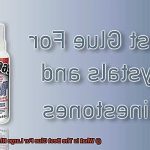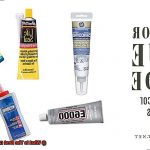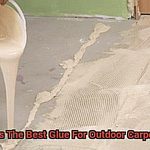If you’ve ever tried your hand at binding a book, you know that finding the perfect glue is like discovering the missing piece to a puzzle. It’s the secret ingredient that holds everything together and keeps those pages from going on their own little adventures. But with so many glues out there, how do you know which one is the best for paper book binding? Well, fear not my friend, because I’m here to guide you through this sticky situation.
Picture this: You’re sitting at your crafting table, surrounded by stacks of beautiful paper just waiting to be transformed into a masterpiece. You want a glue that’s easy to work with, versatile enough to handle different types of paper, and most importantly, one that will stand the test of time. That’s where PVA glue comes in. It’s like the Swiss Army knife of adhesives – reliable, flexible, and always up for any task. Whether you’re binding a novel or creating an artist’s sketchbook, PVA glue has got your back.
But wait, there’s more. If speed is your game and you can’t bear the thought of waiting around for glue to dry (because who has time for that?), then hot melt glue might be your new best friend. This stuff sets faster than lightning and creates an instant bond between those pages. Just be careful not to burn yourself in the process – safety first.
Now, let me take you on a trip down memory lane – back to a time when animal-based adhesives were all the rage. Think ancient manuscripts and vintage books with that distinctive old-world charm. These traditional glues have been used for centuries and are still beloved by purists who appreciate their unique qualities. They may not be as convenient or readily available as modern options, but hey, sometimes it’s nice to honor tradition.
So there you have it – three contenders vying for the title of best glue for paper book binding. Each one has its own strengths and weaknesses, so it’s up to you to decide which glue will be your trusty sidekick on your next bookbinding adventure. Happy binding.
What is Book Binding?
Contents
Book binding is an enchanting process that unites loose pages, transforming them into a harmonious and captivating book. At the core of this artistry lies the power of glue, a simple yet indispensable ingredient that guarantees the resilience and functionality of every page. In this article, we will embark on a journey through the captivating world of book binding, exploring its diverse techniques and the myriad types of glue employed to bring stories to life.
Types of Book Binding:
Book binding encompasses an array of techniques, each bestowing unique attributes and advantages. Let us delve into the fascinating world of perfect binding, saddle stitching, spiral binding, and hardcover binding.
Perfect Binding:
Ideal for paperback books, perfect binding involves uniting the pages with glue along the spine, resulting in a sleek and professional finish. While it may lack the durability of other methods, its clean aesthetic is unparalleled.
Saddle Stitching:
Cost-effective and ideal for thinner publications like magazines and booklets, saddle stitching entails folding the pages in half and stapling them along the spine. Though it shines in slim volumes, it may not be suited for thicker tomes.

Spiral Binding:
With its plastic or metal coil threaded through punched holes along the page edges, spiral binding allows books to lay flat when opened. It offers flexibility for adding or removing pages but might not meet formal or professional standards aesthetically.
Hardcover Binding:
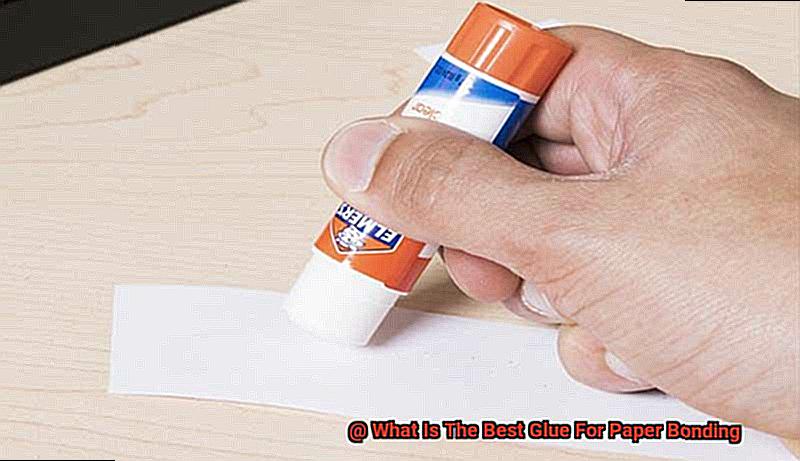
Considered one of the sturdiest and most refined techniques, hardcover binding involves attaching the book block to a firm cover crafted from cardboard or other materials. The cover is then adorned with exquisite cloth or leather. Hardcover books grace the shelves holding novels, textbooks, and important literary works.
The Power of Glue:
Choosing the right glue for paper book binding is paramount to achieving a robust and enduring bond. Various types of glue exist, each with its own merits.
PVA Glue:
Polyvinyl acetate (PVA) glue, a water-based adhesive renowned for its formidable bonding prowess and flexibility, dries transparently. Even after drying, it maintains its supple nature, allowing the pages to move freely.
EVA Glue:
Ethylene vinyl acetate (EVA) glue possesses similar qualities to PVA glue but boasts a higher melting point, rendering it more heat-resistant. This attribute proves advantageous during hot gluing in the binding process. EVA glue establishes a sturdy bond while retaining flexibility once cured.
Animal-Based Glues:
Hide glue and bone glue, derived from animal collagen, possess extraordinary strength and endurance. Although necessitating heating before use and demanding finesse in application, they have stood the test of time in bookbinding for centuries.
Types of Glue for Bookbinding
Choosing the right glue for bookbinding is crucial to ensure the durability and longevity of your books. With various types of glues available, it can be challenging to determine which one is best suited for your project. In this article, we will delve into the different types of glue used in bookbinding and discuss their advantages and disadvantages, empowering you to make an informed decision.
PVA Glue – Versatility and Convenience:
Polyvinyl acetate (PVA) glue is a popular choice for bookbinding due to its versatility and ease of use. It is readily available, affordable, and forms a strong bond. PVA glue dries clear, ensuring a neat finish, and its flexibility allows the book to open and close smoothly. However, PVA glue may not be suitable for projects exposed to high temperatures or humidity.
Animal Glue – Strength and Tradition:
Animal glue, made from animal tissues like cows or rabbits, is a time-tested classic in bookbinding. It offers exceptional bonding properties and can withstand the test of time. Animal glue works well with materials like leather and fabric, but it requires heating during application, making it more challenging to work with compared to PVA glue.
EVA Glue – Heat Resistance and Reliability:
Ethylene-vinyl acetate (EVA) glue is an excellent choice if you need a heat-resistant adhesive. It has a higher melting point than PVA glue, making it more resistant to heat during hot gluing processes. EVA glue’s flexibility and adhesion properties make it ideal for binding lightweight materials like paperback books.
Specialty Glues – Unique Solutions:
Methylcellulose and wheat paste are specialty glues used in specific bookbinding projects. Methylcellulose is a water-soluble adhesive that forms a strong bond, perfect for delicate or fragile materials. It is commonly used in conservation work due to its reversibility. Wheat paste, made from wheat flour and water, is a traditional adhesive known for its archival quality. However, it requires more time to prepare and may not be as readily available as other glues.
PVA Glue
In this article, we’ll delve into the world of PVA glue and explore why it’s the go-to adhesive for paper book binding.
PVA glue, also known as Polyvinyl Acetate glue, has become a staple in the bookbinding industry. But what sets it apart from other glues? Let’s dive into its remarkable advantages.
First and foremost, PVA glue offers flexibility. Unlike some competing glues, PVA remains supple even after it dries. This is crucial for books that are constantly opened and closed. Imagine your beloved novel falling apart with every turn of a page – far from ideal. But fear not, with PVA glue, your binding will stay intact, ensuring you can enjoy your books without worry.
Speed is another advantage of PVA glue. Nobody wants to wait days for their adhesive to dry when they’re immersed in a bookbinding project. With PVA glue, you can have your books ready within a few short hours. Talk about efficiency.
Speaking of efficiency, PVA glue boasts excellent adhesion properties. It clings to paper surfaces like a dream, ensuring your pages stay firmly in place. Gone are the days of loose pages or flimsy bindings – PVA glue provides a steadfast bond that will stand the test of time.
Perhaps one of the most critical advantages of PVA glue is its acid-free and non-toxic nature. This makes it an invaluable choice when working with archival or acid-free papers commonly used in bookbinding. Acidic adhesives can cause paper to yellow or degrade over time, but with PVA glue, your books will remain in pristine condition.
EVA Glue
In this realm of creativity and craftsmanship, one adhesive stands out as the superhero that holds it all together – EVA glue. Join us on an exhilarating journey as we unveil the wonders of EVA glue and its role in the art of paper book binding.
Advantages:
- Unyielding Bonding Strength: Imagine being engrossed in a thrilling novel, eagerly turning each page, and never worrying about them coming loose. With EVA glue, you can experience this blissful confidence. Its remarkable bonding strength creates an unbreakable union between paper surfaces, ensuring that your beloved books remain intact for endless reading adventures.
- Flexibility at Its Finest: Like a skilled contortionist, EVA glue maintains its flexibility even after drying. This incredible trait allows your books to open and close effortlessly, without straining the binding or risking damage to precious pages. It’s like having a yoga instructor for your bookbinding project, ensuring smooth movements without any restrictions.
- Effortless Application: You don’t need to be a crafting expert to wield the power of EVA glue. It welcomes beginners and seasoned artisans alike, adapting to various bookbinding techniques with ease. Whether you prefer sticks, pellets, or liquid forms, applying EVA glue with a brush or glue applicator guarantees precise and controlled application. Plus, it dries quickly, reducing waiting time and keeping you in the flow of your creative process.
- Accessible and Affordable: In the vast universe of crafting supplies, EVA glue shines as a readily available option in most craft stores and online platforms. Its accessibility ensures that bookbinders can effortlessly acquire this potent adhesive for their projects. What’s more, EVA glue’s affordability compared to specialized adhesives makes it a popular choice among both professionals and DIY enthusiasts.
Disadvantages:
Project-specific Considerations: While EVA glue is a remarkable all-rounder for most paper bookbinding projects, it may not be the ideal choice for delicate or valuable books. If you’re working with rare manuscripts or cherished heirlooms, it’s worth exploring specialized adhesives designed for archival purposes to preserve their integrity.
As our expedition through the realm of EVA glue for paper book binding comes to an end, we stand in awe of this extraordinary adhesive’s capabilities. Its unwavering bonding strength, unparalleled flexibility, user-friendly application, and widespread availability make it an indispensable tool for bookbinders far and wide.
However, always remember to consider the unique demands of your project and select the appropriate adhesive accordingly.
Animal-Based Glues
In this exploration, we will uncover the strengths and weaknesses of these historic adhesives, revealing their enduring qualities and the debates surrounding their use. So, let’s embark on a journey that will unravel the secrets behind these remarkable glues.
Advantages:
- Unyielding Strength and Flexibility: Hide glue and fish glue, two prominent animal-based glues, possess exceptional adhesive properties. These ancient concoctions create an unbreakable bond that defies the ravages of time, ensuring your cherished books remain intact for generations to come.
- A Reversible Marvel: Picture a vintage book yearning for tender care and affection. Animal-based glues come to the rescue with their reversible nature. By applying heat and moisture, the old glue can be gently softened and removed without causing harm to the precious pages or binding.
- A Link to the Past: For those who treasure tradition and authenticity, animal-based glues provide a tangible connection to bygone eras. The use of these historic adhesives adds an extra layer of charm to your bound treasures, imbuing them with a rich sense of history.
Disadvantages:
- Moisture Sensitivity: While animal-based glues excel in many areas, they are not impervious to moisture’s relentless advances. High humidity or water exposure can cause these glues to lose their adhesive properties, potentially harming your beloved books. This means that cautious handling and storage in controlled environments are imperative.
- Ethical Considerations: Derived from animal sources, animal-based glues may ignite ethical concerns among certain individuals. Vegans or those seeking cruelty-free alternatives may opt for synthetic adhesives that do not rely on animal-derived ingredients.
Animal-based glues have been trusted companions in bookbinding for centuries, offering unmatched strength, flexibility, and reversibility.
Nevertheless, they do have limitations when it comes to moisture sensitivity and ethical considerations. As the art of bookbinding evolves, synthetic alternatives gain popularity due to their improved properties and ease of use.
However, animal-based glues still hold a special place in the hearts of traditional bookbinders, preserving historic authenticity and providing unique characteristics that cannot be replicated.
Acrylic-Based Adhesives
Prepare to be captivated by the fascinating world of adhesives and how they play a vital role in binding those precious pages together. Today, we will be delving into the remarkable advantages and important considerations surrounding the use of acrylic-based adhesives for paper book binding.
Let’s kick off with the incredible advantages that acrylic-based adhesives bring to the table. One of their most alluring qualities is their lightning-fast drying time. With these adhesives, you can complete your bookbinding projects in record time, without any pesky smudges or damage to the pages. But that’s not all. These adhesives also offer outstanding flexibility and resistance to aging. They’re like superheroes, effortlessly braving environmental factors such as temperature changes and humidity to ensure that your beloved book remains intact for years to come.
Now, let’s talk about transparency. When applied with precision, acrylic-based adhesives dry clear as a summer’s day, leaving no visible residue or unsightly marks on the pages. This is absolutely crucial for maintaining the aesthetic allure of your book, allowing you to fully immerse yourself in the captivating text and mesmerizing illustrations without any distractions.
When it comes to application, acrylic-based adhesives are available in both liquid and gel forms, making them as versatile as a chameleon on a color palette. With a brush or applicator in hand, you’ll experience effortless ease as you apply these adhesives to your project. What’s more, you have complete control over their viscosity by simply adjusting the amount of solvent used. It’s like having a magic wand in your creative arsenal.
However, before you dive headfirst into using acrylic-based adhesives, it’s important to consider a few key points. While they possess an array of advantages, these adhesives may not be suitable for delicate or valuable antique books. If you find yourself lucky enough to be working with such treasures, it’s highly recommended to consult with a professional conservator specializing in book restoration before using any adhesive.
Factors to Consider When Choosing a Glue for Bookbinding
When choosing a glue for bookbinding, several factors should be taken into consideration to ensure the best results. Here are some key factors to keep in mind:
- Adhesive Strength: Look for a glue that creates a strong bond capable of withstanding regular use. It should securely hold the pages together, preventing them from coming loose or falling out.
- Flexibility: Books are opened and closed repeatedly, so the glue should be flexible enough to withstand this constant movement without cracking or breaking. This allows the pages to move freely while keeping the binding intact.
- Drying Time: Consider your timeline and project requirements. Quick-drying glues are ideal for tight deadlines or when binding multiple books. However, if time is not an issue, you may prefer a slower drying glue that gives you more working time.
- pH Level: Acidic glues can cause damage over time, leading to yellowing or deteriorating of the paper. Choose a pH-neutral glue to ensure the longevity and preservation of your books, especially when working with delicate or valuable materials.
- Ease of Application: Look for glues that come in convenient applicator bottles or sticks for easier handling and even application. This factor is particularly important for beginners as it can enhance the overall experience.
- Longevity: Opt for glues specifically designed for bookbinding that have a reputation for lasting well over time. You want your books to last for years, so the glue used for binding should have good longevity too.
- Compatibility with Different Paper Types: Test the glue on a small sample before using it on your actual book to ensure compatibility with different paper types. Some glues may work better on certain papers, while others may cause issues like wrinkling or warping.
- Environmental Considerations: Choose non-toxic and eco-friendly glues whenever possible. These options are safer for you to use and contribute to a healthier environment.
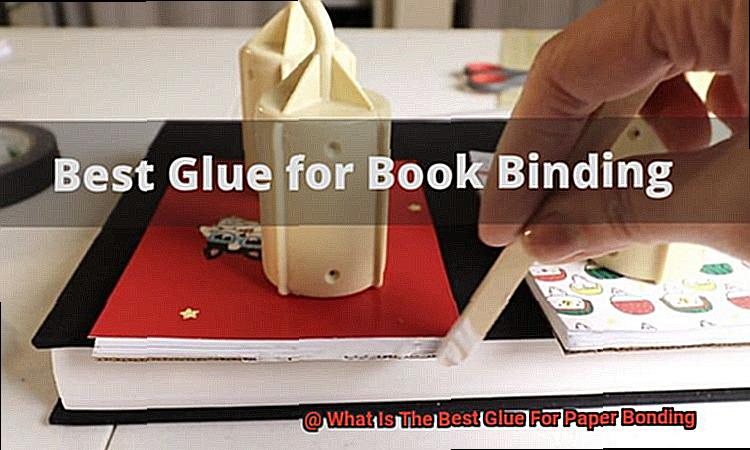
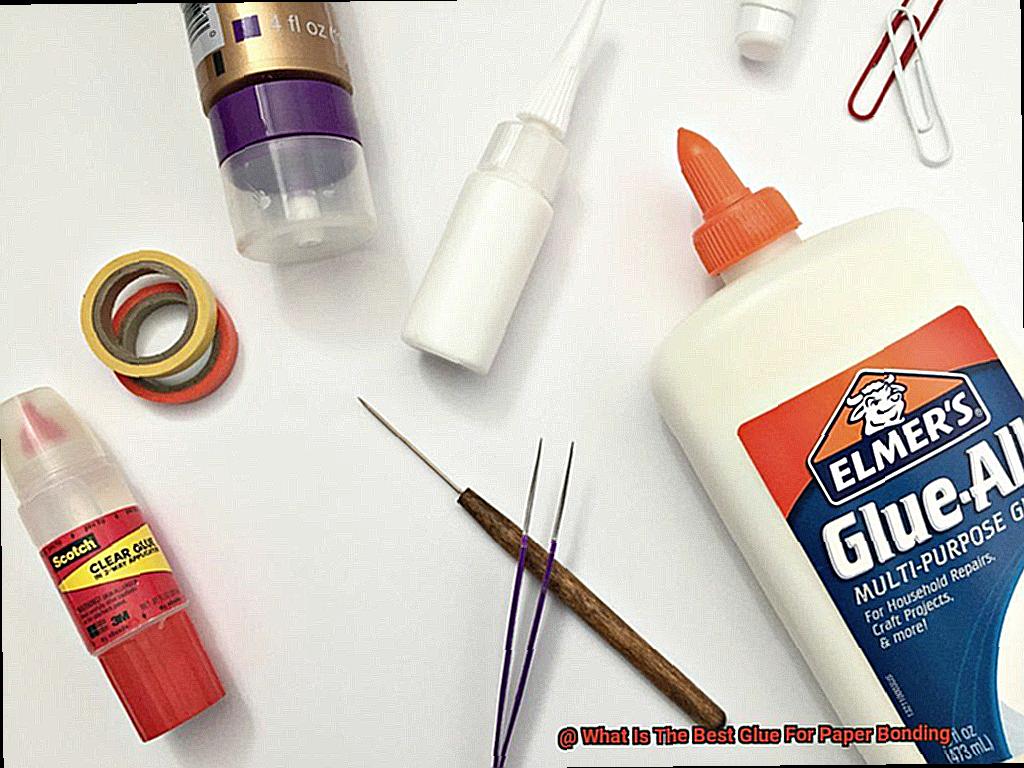
Experiments and Techniques to Find the Best Glue for Your Needs
In this exploration of glue experiments and techniques, we will delve into the fascinating world of adhesive selection. Get ready to don your lab coats and embark on a journey to find your ideal bonding agent.
To begin, let’s discuss the pull test. This experiment involves applying a small amount of glue to a strip of paper and allowing it to dry. Once dry, you can test the adhesive strength by pulling the paper apart. This test provides valuable insight into which glues can withstand the demands of bookbinding, ensuring a strong and durable bond.
Drying time is another crucial factor to consider. Some glues dry in a flash, perfect for those working on tight deadlines. Others take their time, allowing for a more leisurely bonding experience. Depending on your project timeline, you’ll want to select a glue that aligns with your need for speed or patience.
Next, let’s explore application methods. Glues come in various forms, from squeeze bottles with fine tips for precise application to brushes or spatulas for spreading. Experimenting with different techniques will help you discover the method that offers optimal control and coverage, ensuring a seamless binding process.
Flexibility and durability are vital considerations in the glue game. Book bindings endure frequent bending and flexing, necessitating a glue that can handle these movements without cracking under pressure. Look for glues specifically formulated for bookbinding or those boasting flexible properties to ensure long-lasting results.
As you embark on your quest for the ideal glue, don’t forget about those extra special features. If eco-friendliness is high on your list of priorities, there are glues made from natural and non-toxic ingredients that will satisfy both your adhesive needs and Mother Nature’s requirements. Additionally, consider glues that offer resistance to moisture or sunlight if your books will be exposed to these elements.
oczhx5LzAWE” >
Conclusion
When it comes to paper book binding, finding the best glue is crucial. The right glue can ensure that your book stays intact for years to come. But with so many options out there, how do you choose? Well, fear not. I’m here to guide you through this sticky situation and help you find the perfect adhesive for your bookbinding needs.
Now, let’s talk about the qualities you should look for in a glue. First and foremost, it needs to be strong. You don’t want your pages falling out at the slightest touch, do you? No way. So opt for a glue that has excellent bonding capabilities.
But strength alone isn’t enough; flexibility is key too. Your book will be opened and closed countless times, so the glue needs to withstand all that bending without cracking or breaking apart. A flexible adhesive will ensure that your book remains intact no matter how much it gets tossed around.
Durability is another factor to consider. You want a glue that can stand the test of time and won’t deteriorate over years of use. Look for one that is resistant to moisture and temperature changes, as these factors can weaken the bond between pages.
Now let’s get down to business and discuss some top contenders in the world of bookbinding glues.
One popular option is polyvinyl acetate (PVA) glue. It’s widely used in bookbinding due to its excellent adhesion properties and flexibility. PVA dries clear, which means it won’t leave any unsightly residue on your pages. Plus, it’s readily available and affordable too.
Another contender is methyl cellulose glue. This adhesive has a unique advantage – it’s reversible. That means if you ever need to make changes or repairs to your bound book, you can easily remove the glue without damaging the pages. Talk about convenience.
If you’re looking for something extra strong and durable, epoxy resin might be your best bet. This glue forms an incredibly strong bond and is resistant to moisture, making it perfect for books that will be exposed to harsh conditions.
Of course, these are just a few options among many. The key is to find a glue that meets your specific needs and preferences. Consider factors like drying time, odor, and ease of application when making your decision.
In conclusion, the best glue for paper book binding depends on your requirements. Whether you prioritize strength, flexibility, durability, or all of the above, there’s a glue out there that will meet your needs.

